Crest on the arms
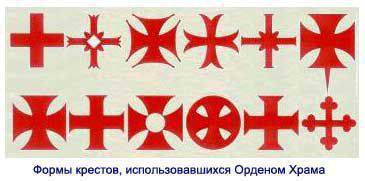
It is clear that the simplest cross, which appeared at the dawn of heraldry in the era of the Crusades to the East, was the most common image on the arms. And although he was not the first to appear on the knightly coat of arms that had come down to us - the first was the blue shield of Geoffroy of Anjou, decorated with fancy golden lions - a gift from King Henry I made to him around 1170 of the year - still one of the first heraldic symbols that appeared because it reflected the very essence of the crusading movement.
We see it on the very simple emblems of Genoa and Milan (scarlet, that is, a red cross on silver, that is, on a white shield field), Savoy (white cross, red field), Verona (golden, that is yellow on a blue shield) and so Further. Many emblems contained an image of a simple cross in the past, but then they changed. For example, a simple red cross on a blue field, decorated with golden lilies, was in the Middle Ages near the city of Reims, the same, but only the black cross had the archbishopric of Cologne and Trier. The coat of arms of the city of Mantua was exactly the same as that of Milan and Genoa, only in the left upper quarter of its shield is the patron saint of the city of St.Anselm.
On the coat of arms of the German city Attendorf, a simple black cross complements the red crescent in the upper right quarter. We see simple heraldic crosses in the emblems and such famous spiritual and knightly orders as the Order of Knights Templar - a red cross on a black and white shield, the Order of Saint Lazarus - a green cross on a white shield. And also on the emblem of the modern Sovereign Military Order of St. John of Jerusalem (known in former times as the Order of Malta). On it, he, by the way, is also direct, as reported by such a connoisseur of European heraldry as Stephen Slater.
The scaly cross or cavalier cross adorned the coat of arms of Kommenzh county, and today it can be seen next to the silver sword on the coat of arms of the Belarusian city of Krichev. Klinchaty (with wide ends) is represented in the coat of arms of Goms district in Switzerland, and there are two of them at once: white on red above and red on white, which is described in heraldic language (i.e., blazonirovannuyu) like this: in a shield crossed on scarlet and silver alternately painted wedge shield. The guardian cross is located on the arms of the city of Bethune in France.
The cross, broadened at the ends, can be seen on the coat of arms of the German city of Bachenau. He is black on silver and in the right quarter he has the same black key. The cross crossed adorns the emblem of the municipality of Berango in Spain: in the dissected shield there is a silver cross crossed, in the corners there are four golden lilies in azure, and four black dogs with scarlet tongues per pillar in silver. Also, the red anchor cross belonged to the yellow-green coat of arms of the English Count John Elchum, participant of the Hundred Years War, and the gold cross - the coat of arms of the Falleron commune in France.
It should be noted that France is generally rich in various types of crosses in the emblems of its communes and cities. Therefore, here you can see the so-called mill cross in the arms of the commune of Le Cristobal, where it is silver in an azure field; lily-shaped - in the municipality of Buansss-Sans-Avoir, with golden lilies in the corners; cloverleaf - at the Agilkur commune, and even pointed (with tips at the ends!) - at the Peitz commune: a silver pointed cross in the scarlet field, four golden lilies in the corners. The arrow cross was chosen by the creators of the film “Inhabited Island”, based on the novel by the Strugatsky brothers, as the emblem of the “State of the Fathers” on the planet Saraksh, and on Earth we have it, for example, on the coat of arms of the city Putaendo in Chile. The shield of the coat of arms is crossed and half cut apart; in the first part in a green field there are three golden ears under a silver star between two silver sabers; the second part is six times beveled with chervlen and gold; in the third part, in a azure field, a silver lapel cross, followed at the corners by four sheets of the same metal. Spherical cross - that is, a cross with balls at the ends, is in the coat of arms of the Spanish municipality Les-Avelyanes-and-Santa Linya, but the same Eastern swastika - scarlet in a silver field - represented the coat of arms of the Polish noble family Boreiko!
At the same time, many crosses associated with certain territories or knightly orders could well be found on the coat of arms of cities that have nothing to do with all this! For example, the eight-pointed Maltese (and also Johannite) cross is in the arms of the French commune Rontalon, the red Jerusalem cross is in the arms of the commune of Oliva, all in the same France. Even a very ancient, so-called “cross in a halo” or a Celtic cross also found a place on the coat of arms ... of the Holy Roman Empire bishopric of Würzburg: a black Celtic cross in a silver shield with a scarlet toothed head.
The cross of the Order of the Knights of St. Yago fell on the coat of arms of the municipality of Ulea in Spain, while the Toulouse, Occitan (and also it is called Qatari) cross is on the coat of arms of the commune of Zhemiy: a gold occitan cross in a shield. By the way, at the very Toulouse coat of arms is now completely different, but the original Toulouse cross is emblazoned on the flag of Toulouse. It is also found on many other coats of arms in the Languedoc and even on the stone window sills in the castle of Carcassonne, and why this is so, of course, because this is their original emblem.
The Serbian cross looks quite ordinary - it is a narrow simple silver cross. However, the Serbs accompany him in the corners with four flints of the same metal, and this is how the silver cross and four flints on the scarlet shield look like the modern coat of arms of Serbia, only the shield with the cross is placed on his eagle chest!
But the famous Burgundian cross, referred to in heraldry as a stumpy, branched, or blunt in essence, is all the same St. Andrew's cross. In the emblem of Burgundy, it was absent before and absent now, but it decorated its banner and - moreover, somehow penetrated the emblem of the old Russian city of Poshekhonsk. In the golden shield is a green burgundy cross - this was the emblem of old! In Spain, this cross (red on yellow) has also become a naval flag, and here for some reason it is called the Holy Cross. Magdalene!
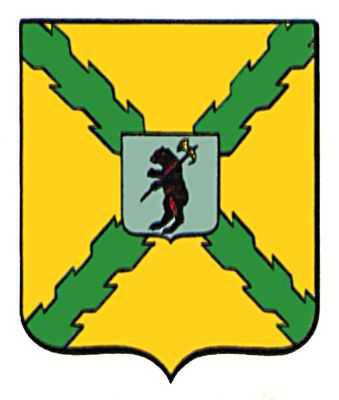
Christian crosses also found their place on the arms, and none of them was deprived of attention. So the image of the golden Latin cross can be seen in the arms of the commune Emarg in France; The “martyr cross” of St. Peter adorns the coat of arms of the village of Kucherov in the Czech Republic, although if you think about it, what relation did this saint have to this particular village ?! Azure Cross of St. Anthony or tau-cross is on the coat of arms of Rønø parish in Sweden, and he is burdened with a smaller silver tau-cross, and it is located between the alchemical symbol of copper and the flame! The papal cross and two suns are placed on the coat of arms of the Spanish city of El Soleras. The coat of arms of the department of Maine and Loire in France is dissected to azure with a scarlet edging and gold lilies and azure with a scarlet archbishop's cross and exactly the same golden cross adorns the rider's shield on the coat of arms of Lithuania. The six-pointed Orthodox cross is in the arms of Kherson, and the cross of Calvary is in the arms of the municipality of Fulida in Spain. The image of the cross can be seen in the arms of Aragon, with three at once, and Asturias in Spain, the Saarland and the land of Rhineland-Palatinate in Germany, as well as the German cities of Attenweiler and Assweiler. But the emblem of the German city of Coburg at one time had a metamorphosis: on its ancient coat of arms was the head of the Moor, depicting St. Mauritius, which was very annoying to the national socialists from the party of Adolf Hitler who came to power. Therefore, already in 1934, it was replaced by a sword with a swastika on the head of the hilt. In 1945, the old coat of arms was restored again.
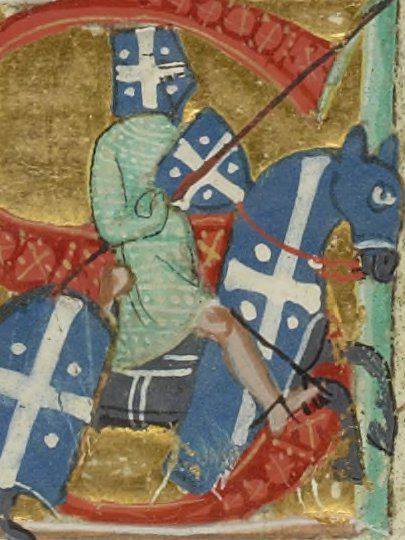
Interestingly, sometimes heraldic figures could be located on the cross itself, because of which its size increased accordingly. So, for example, in the coat of arms of an unknown knight (d. 1330), whose effigy is in the church of the English city of Whitvotra, there are five eagles on the cross at once, and in the left upper quarter there is also a ring.
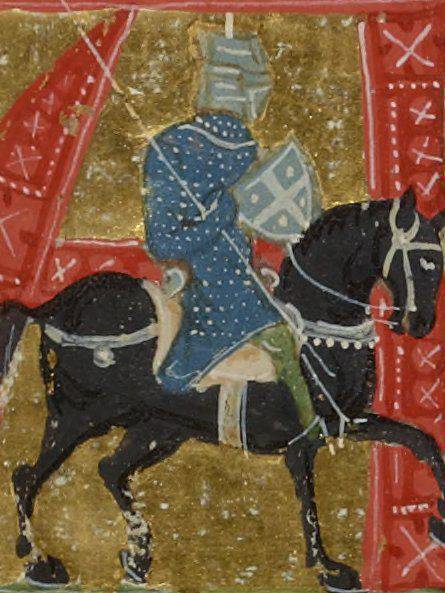
Well, how many can be crosses on the coat of arms? Or let's say this: who among their creators had the imagination to decorate his coat of arms with the greatest number of crosses? It is clear that the smallest number is one cross, such as the oblique St. Andrew's cross in the coat of arms of the Irish kind of Fitzgerald and the Latin kind of O'Donnell. The coat of arms of the English genus Willogby included four crosses: two studded and two anchor! There are five crosses in the coat of arms of the city of Abington-on-Thames: one large liliform golden cross in the center of a green shield and four silver crosses on the corners. Five crosses were also in the coat of arms of the Kingdom of Jerusalem, and in the earlier form the main cross was spherical and only then replaced with a cross with a crutch, which apparently symbolized a greater level of support! Finally, as many as six crosses of the Order of Santiago are present in the coat of arms of the English family Davenport from Capeporn, however, this, as it turns out, is not the maximum possible!
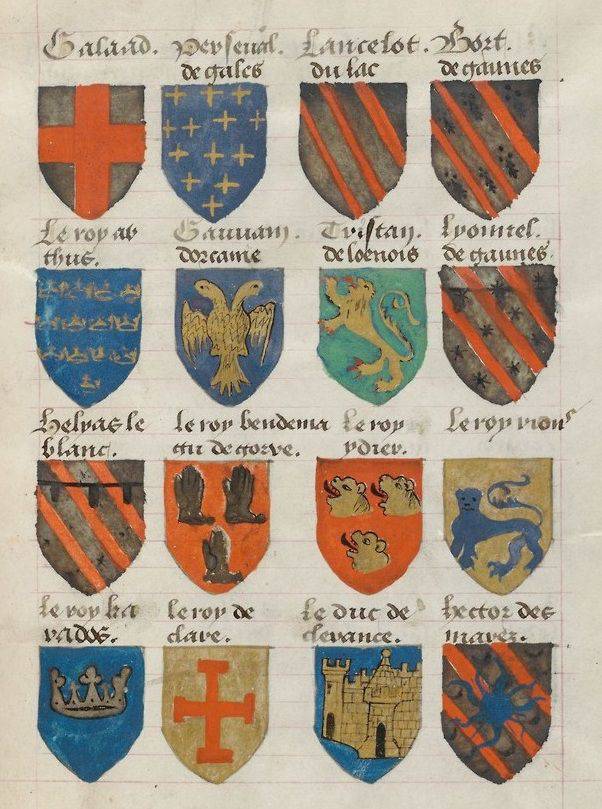
Known, for example, is the English knight Sir Roger de Trampington (his memorial bronze plaque is in the Trampington church in Cambridgeshire and dates from 1289), who in 1270 went on a crusade with Prince Edward and happily returned back, as his name is mentioned in the list of participants of the tournament in Windsor in 1278 year. So, in addition to two pipes, on his coat of arms, he can see nine (!) Crossed crosses, which, like the pipes, were gold, and put on azure, that is, they were on a blue field.
But the effigy of the knight Maurice Berkeley from the cathedral in Bristol (d. 1326) in the coat of arms, in addition to the rafter, cutting the shield field into two parts, there are at once ten wedge crosses (!) - six above the rafter and four below! And what would that mean? Special piety or what ?! The desire to become holier than all the saints?
(to be continued)

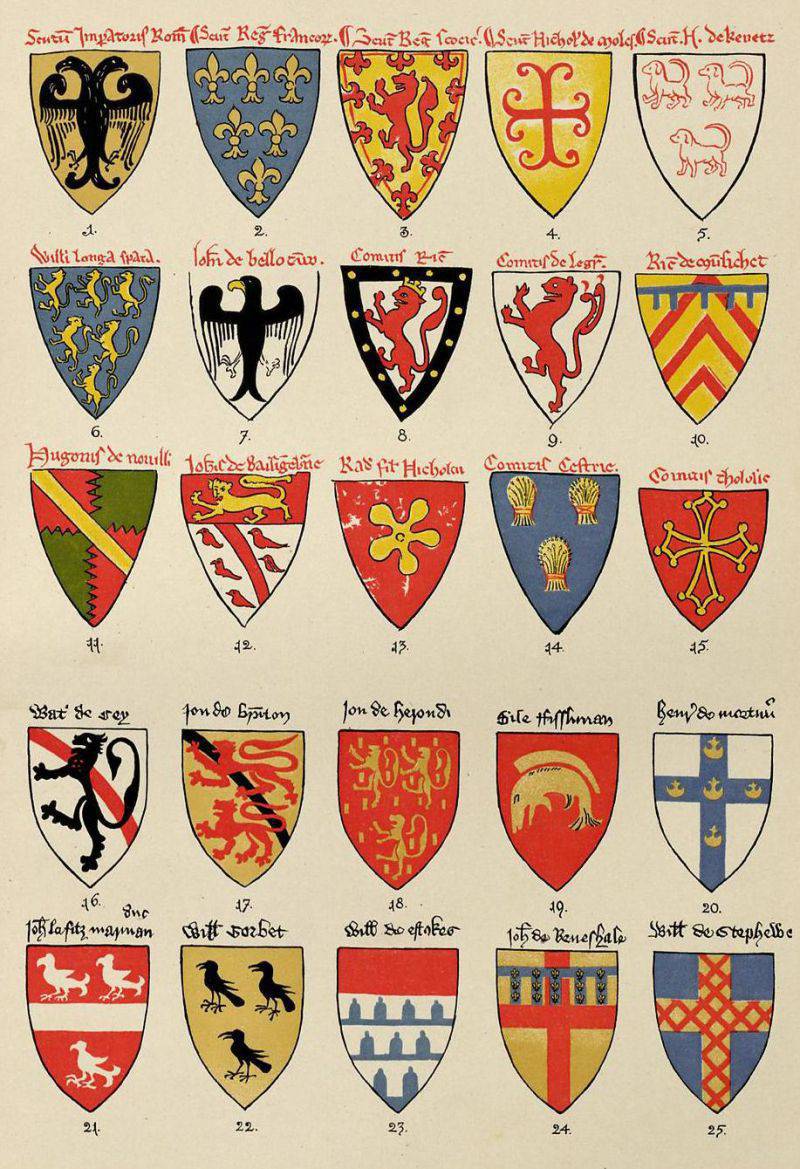

Information